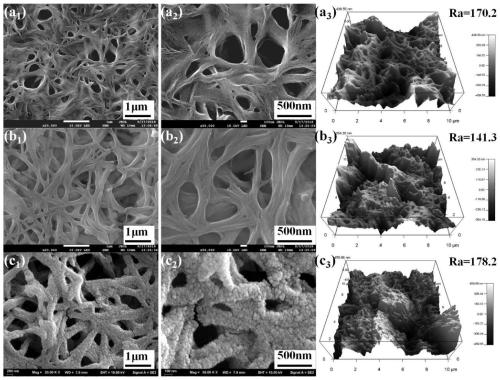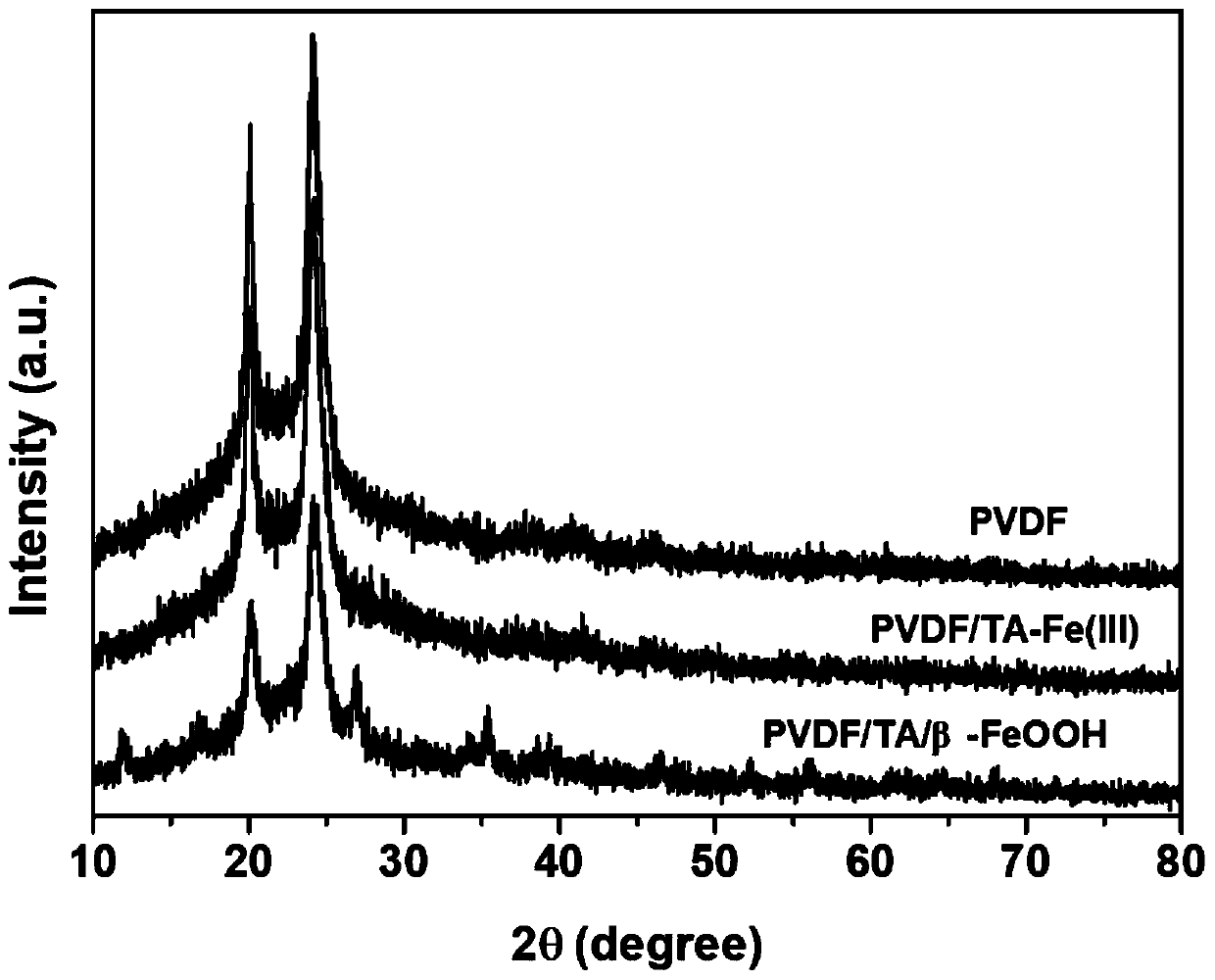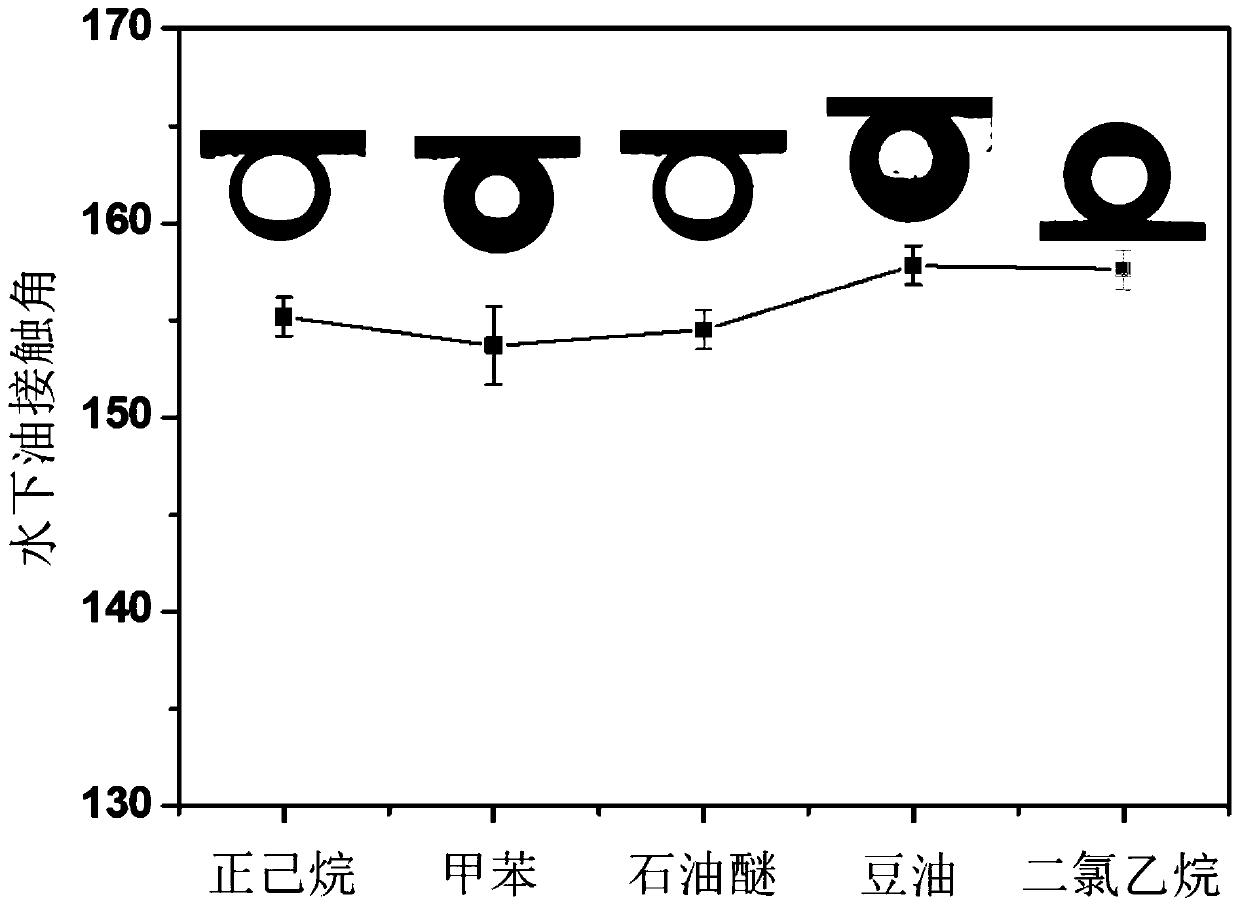Preparation method of photo-Fenton self-cleaning film and application thereof
A technology of self-cleaning film and polyvinylidene fluoride film is applied in the field of preparation of optical Fenton self-cleaning film, which can solve problems such as hindering the application of film, and achieve the effects of strong self-cleaning, efficient separation and enhanced stability.
- Summary
- Abstract
- Description
- Claims
- Application Information
AI Technical Summary
Problems solved by technology
Method used
Image
Examples
Embodiment 1
[0029] (1) Surface modification of commercially available polyvinylidene fluoride membranes: first pre-wet a piece of commercially available polyvinylidene fluoride membranes with ethanol, and then soak the polyvinylidene fluoride membranes in an aqueous solution of 2 mg / mL tannic acid for 5 min. Then rinse the polyvinylidene fluoride membrane with tannic acid with deionized water, denoted as PVDF / TA membrane, and then transfer to FeCl with a concentration of 2mg / mL 3 ·6H 2 O aqueous solution for 5min, after rinsing with deionized water, dry at room temperature to obtain PVDF / TA-Fe(III) membrane;
[0030] (2) Preparation of self-cleaning membrane: a piece of PVDF / TA-Fe(III) membrane immersed in a concentration of 0.4wt% FeCl 3 ·6H 2 O aqueous solution was incubated at 60°C for 24 hours in a water bath, the membrane was taken out, rinsed with deionized water, and dried at 40°C to obtain a self-cleaning membrane, denoted as PVDF / TA / β-FeOOH.
Embodiment 2
[0032] (1) Surface modification of commercially available polyvinylidene fluoride membranes: first pre-wet the polyvinylidene fluoride membranes with ethanol, then soak the polyvinylidene fluoride membranes in 3.5 mg / mL tannic acid aqueous solution for 8 min, and then use Rinse the polyvinylidene fluoride membrane with tannic acid in deionized water, denoted as PVDF / TA membrane, and then transfer to FeCl with a concentration of 3.5mg / mL 3 ·6H 2 O aqueous solution for 8min, after rinsing with deionized water, dry at room temperature to obtain PVDF / TA-Fe(III) membrane;
[0033] (2) Preparation of self-cleaning membrane: the PVDF / TA-Fe(III) membrane is immersed in 0.2wt% FeCl 3 ·6H 2 O aqueous solution was incubated at 75°C for 18 hours in a water bath, the membrane was taken out, rinsed with deionized water, and dried at 40°C to obtain a self-cleaning membrane, which was designated as PVDF / TA / β-FeOOH.
Embodiment 3
[0035] (1) Surface modification of commercially available polyvinylidene fluoride membranes: first pre-wet the polyvinylidene fluoride membranes with ethanol, then soak the polyvinylidene fluoride membranes in 5 mg / mL tannic acid aqueous solution for 10 min, and then use The polyvinylidene fluoride membrane with tannic acid was rinsed with ion water, denoted as PVDF / TA membrane, and then transferred to FeCl with a concentration of 5mg / mL 3 ·6H 2 O aqueous solution for 10min, after washing with deionized water, dry at room temperature to obtain PVDF / TA-Fe(III) membrane;
[0036] (2) Preparation of self-cleaning membrane: the PVDF / TA-Fe(III) membrane is immersed in 0.6wt% FeCl 3 ·6H 2 O aqueous solution was incubated at 90°C for 12 h in a water bath, the membrane was taken out, rinsed with deionized water, and dried at 40°C to obtain a self-cleaning membrane, which was denoted as PVDF / TA / β-FeOOH.
[0037] figure 1 For PVDF, PVDF / TA-Fe(III) and the scanning electron microscop...
PUM
 Login to View More
Login to View More Abstract
Description
Claims
Application Information
 Login to View More
Login to View More - R&D
- Intellectual Property
- Life Sciences
- Materials
- Tech Scout
- Unparalleled Data Quality
- Higher Quality Content
- 60% Fewer Hallucinations
Browse by: Latest US Patents, China's latest patents, Technical Efficacy Thesaurus, Application Domain, Technology Topic, Popular Technical Reports.
© 2025 PatSnap. All rights reserved.Legal|Privacy policy|Modern Slavery Act Transparency Statement|Sitemap|About US| Contact US: help@patsnap.com



